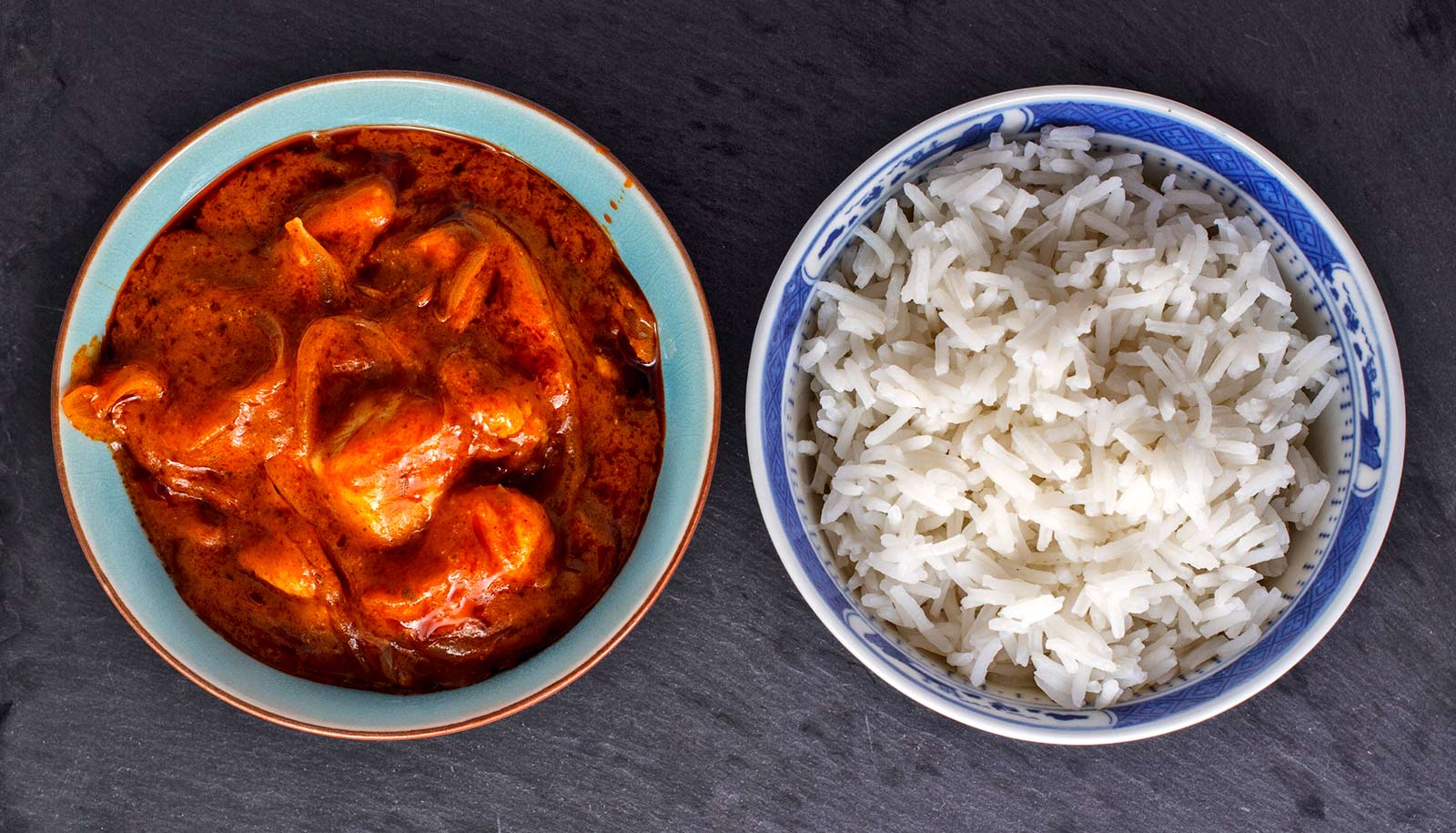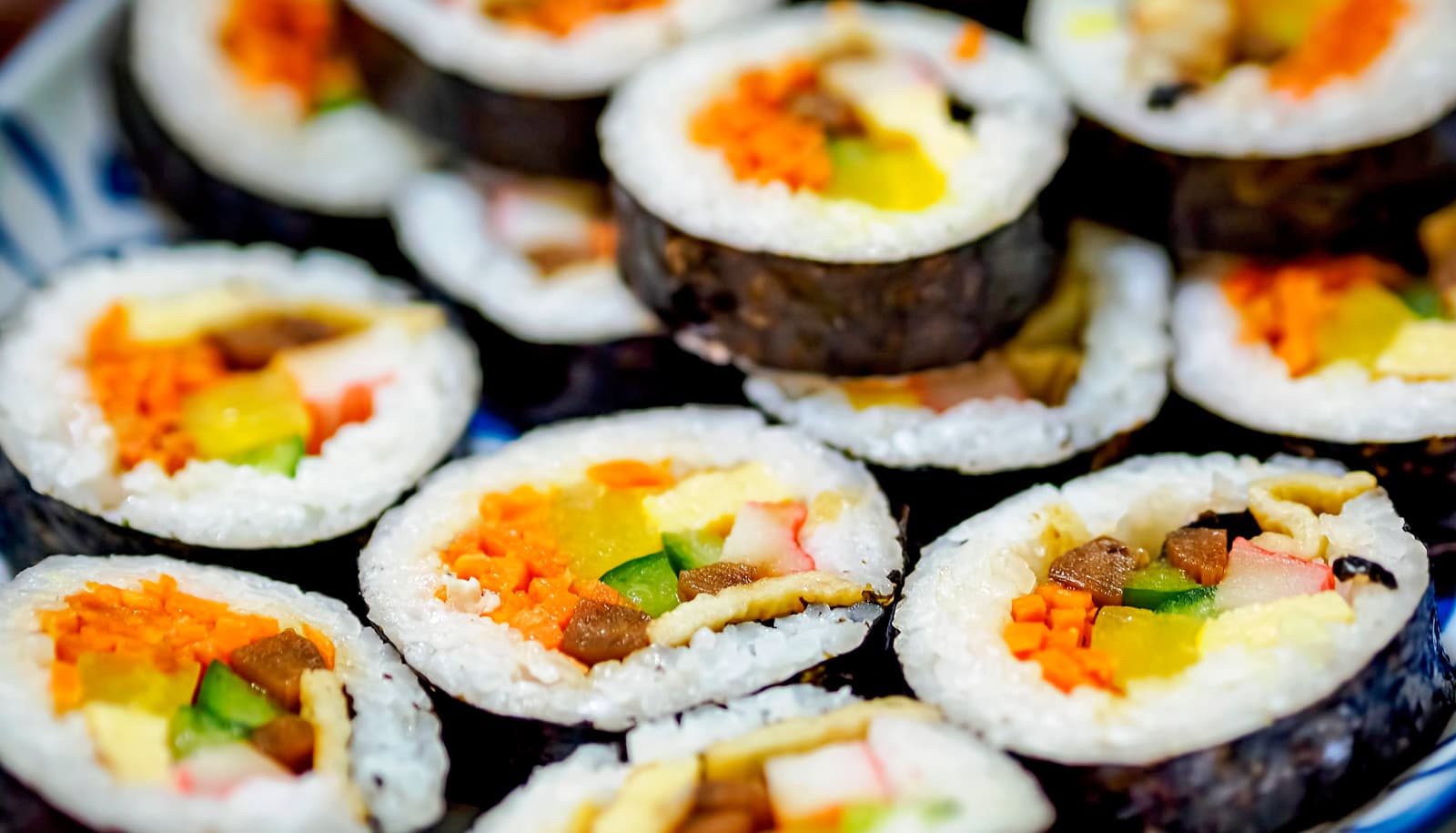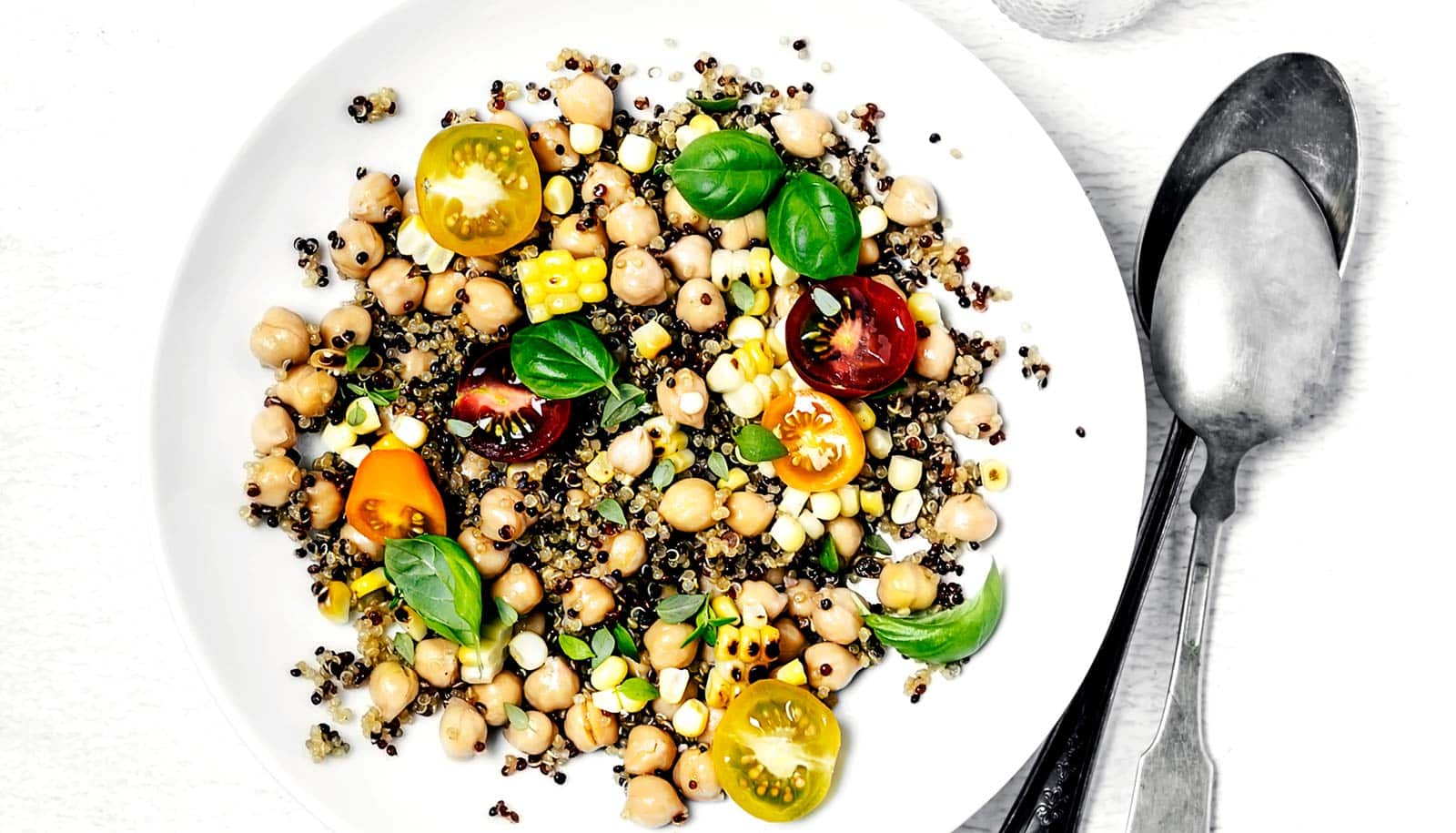Researchers have assembled the complete genome of two varieties of basmati rice, one of which is drought-tolerant and resistant to bacterial disease.
The findings, published in Genome Biology, show that basmati rice is a hybrid of two other rice groups.
Basmati—derived from the Hindi word for “fragrant”—is a type of aromatic long-grain rice grown in southern Asia. Despite the economic and cultural importance of it and other aromatic rice varieties, their evolutionary history is not fully understood.
“Rice is one of the most important staple crops worldwide, and the varieties in the basmati group are some of the most iconic and prized rice varieties. However, until recently, a high-quality reference genome for basmati rice did not exist,” says Jae Young Choi, a postdoctoral scholar at New York University and lead author of the study.
Whole-genome sequencing—which determines an organism’s complete DNA sequence—is an important tool for studying plants and improving crop varieties. Prior research assembled the genome for the rice using short-read sequencing—in which DNA is broken into tiny fragments and then reassembled—but there were missing sequences and gaps in the data.
The researchers in NYU’s Center for Genomics and Systems Biology sequenced the genome of two members of the basmati rice group using nanopore sequencing technology. Developed by Oxford Nanopore Technologies, a collaborator on this project, nanopore sequencing is a third-generation sequencing technology that allows long single molecules of DNA to be sequenced quickly, improving on the completeness and efficiency of earlier genome sequencing.
The researchers focused on two basmati rice varieties: Basmati 334 from Pakistan, known to be drought tolerant and resistant to rice-killing bacterial blight, and Dom Sufid from Iran, an aromatic long-grain rice that is one of the most expensive on the market. Using long reads from nanopore sequencing, the researchers assembled high-quality, complete genomes of the two basmati rice varieties that were a significant improvement over earlier genome sequences assembled using short reads.
The sequencing also confirmed that basmati rice is a hybrid of two other rice groups. Most genetic material in basmati comes from japonica (a rice group found in East Asia), followed by the rice group aus (found in Bangladesh).
Having established the genome sequences of basmati rice, the researchers aim to work with the scientific and rice breeding communities to identify important genes, see what makes the basmati group unique, and even develop molecular markers to help breed new varieties.
“By having the sequence of rice varieties like Basmati 334, which can withstand drought conditions and resist bacterial blight, we can start to identify genes that give rise to these valuable traits,” says Michael Purugganan, professor of biology at NYU and the study’s senior author. “Drought tolerance is something we are particularly interested in, given the challenges we face due to climate change and the implications for food security worldwide.”
Additional coauthors are from NYU, Oxford Nanopore Technologies, and the New York Genome Center. Support for the work came from the Zegar Family Foundation, the National Science Foundation Plant Genome Research Program, the Gordon and Betty Moore Foundation, and NYU Abu Dhabi Research Institute.
Source: NYU



